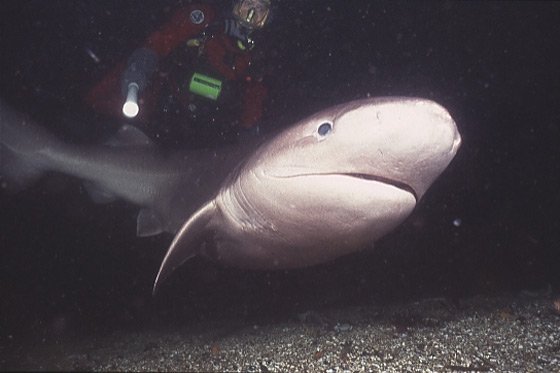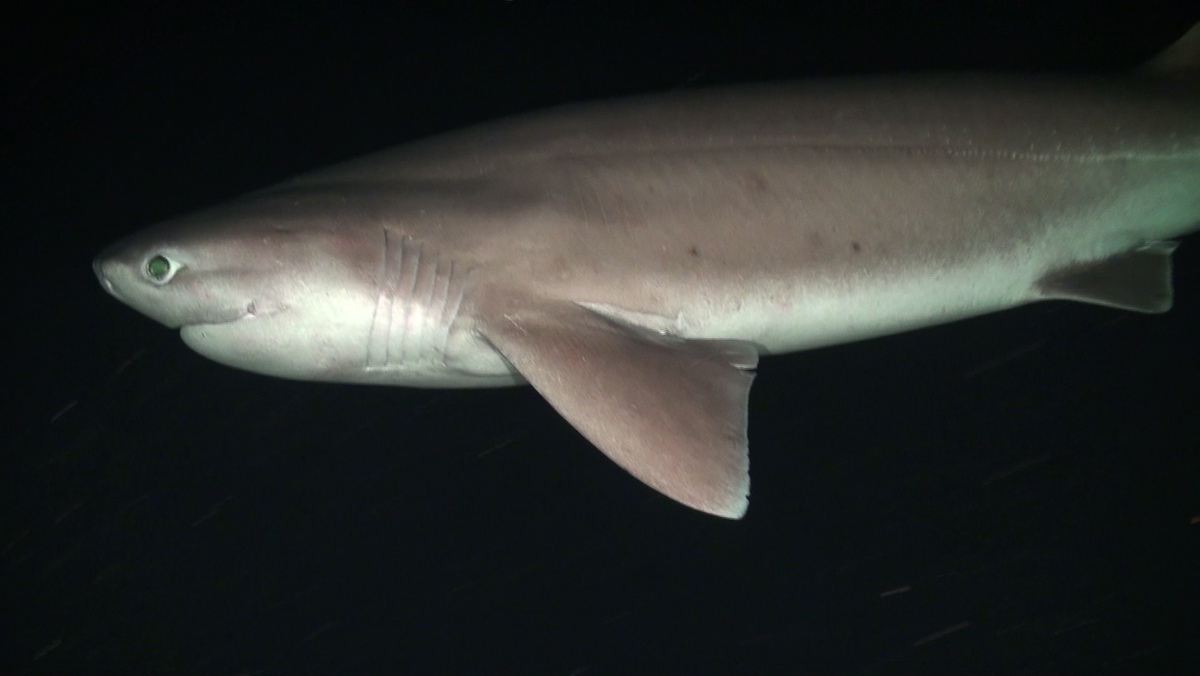Sixgill sharks that live in the Atlantic Ocean are different from their relatives that live in the Indian Ocean. A team of scientists led by Florida Institute of Technology’s Toby Daly-Engel confirmed this after genetic testing. So we welcome the Atlantic Sixgill Shark to the large family of shark species.
Using 1,310 base pairs of two mitochondrial genes, Daly-Engel, an assistant professor of biological sciences at Florida Tech, and colleagues from MarAlliance in Belize, Florida State University Coastal and Marine Laboratory in Teresa, Florida, and the National Marine Fisheries Service, Southeast Fisheries Science Center in Panama City, determined there are enough genetic differences between what had long been considered a single species, Hexanchus nakamurai, to rename the Atlantic variety Hexanchus vitulus.
They published their findings this week in the online edition of the journal Marine Biodiversity.
Prehistoric sharks
The prehistoric looking sharks are among the oldest creatures on Earth. Their ancestors were around before the dinosaurs. Their habitat is well below the surface, sometimes thousands of meters deep, making it a challenge to study them. The difference between the two species has long been suspected but never confirmed.
The new species also turn out to be smaller than their Indo-Pacific relatives. Atlantic Sixgill Sharks grow up to about 2m in length, while the Sixgill Sharks in the other oceans can grow up to 5m. They have unique, saw-like lower teeth and six gill slits, as their name suggests.

Better chance at survival
With their new classification, Atlantic sixgill sharks will now have a better chance at long-term survival, according to the researchers.
“Because we now know there are two unique species, we have a sense of the overall variation in populations of sixgills”, said dr. Daly-Engel to Phys.org. “We understand that if we overfish one of them, they will not replenish from elsewhere in the world,”
And that’s the other benefit of this research: a better understanding of shark diversity.

